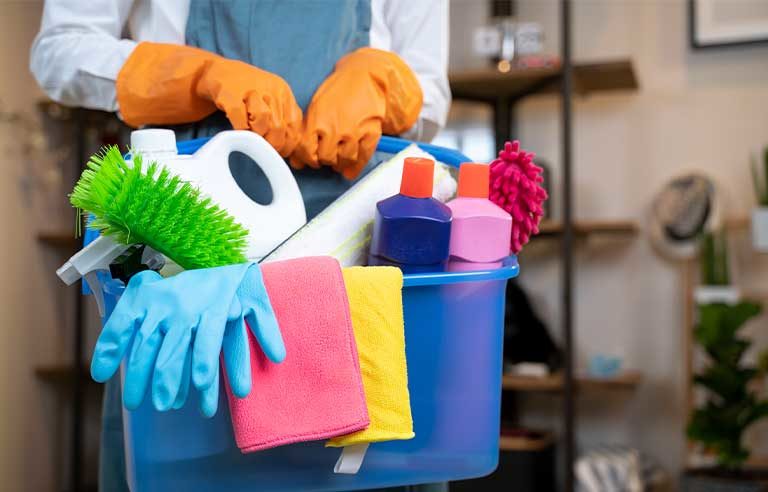6 strategies for safe spring cleaning

Photo: seksan Mongkhonkhamsao/gettyimages
Green grass, flowers and trees budding … is it any wonder that springtime makes us want our homes to feel fresh and new, too?
But in our eagerness to shake out the rugs and clear those dusty corners, it’s easy to overlook the hazards that come with cleaning tasks. To make your yearly ritual safer and easier, follow these six simple tips:
1. Start with a plan. Before launching into a cleaning session, think about what you want to accomplish and what you’ll need to get the job done safely. Ask yourself:
- Do I have the necessary supplies?
- Will I need to reach any high or low places?
- Will I need assistance moving furniture or other heavy objects and, if so, when will any helpers be available?
2. Gather the right tools. Once you’ve got a plan, make sure you have the tools necessary to clean without hurting your back, neck or shoulders. Some tips:
- Use a stepstool or ladder to reach higher places, or something to sit on if you’ll be low to the floor for an extended period.
- Choose the lightest tools available to avoid unnecessary strain.
- When cleaning in high or hard-to-reach places, any tool that extends your reach, such as a stepladder or a sponge with a pole attachment, can be a huge help.
3. Respect household chemicals. Just because a cleaning product is widely available doesn’t mean it’s safe for casual or careless use, according to the Environmental Protection Agency’s Safer Choice program. Some tips:
- Follow label directions
- Make sure the room you’re cleaning is well-ventilated.
In case of unintentional exposure, call the national Poison Help Hotline (800-222-1222), your regional poison control center or 911.
4. Check product labels. How much product should you apply? Where in your home is it meant – or not meant – to be used? Does it emit harmful fumes? It may not be a gripping read, but that fine print on the back of the package will tell you how to work with a household cleaner safely and effectively.
5. Don’t mix and match. The EPA strongly warns against mixing household chemicals – especially anything containing bleach. The wrong combinations can produce dangerous (and even deadly) reactions or vapors.
6. Listen to your body. Spring cleaning may call for more physical exertion and repetitive motions than usual. This raises the risk of strain or injury. Stay alert for warning signs that you’re working your body in ways you’ll regret tomorrow, such as loss of balance, muscle fatigue or abnormal sensations such as numbness or tingling down your arm.
Post a comment to this article
Safety+Health welcomes comments that promote respectful dialogue. Please stay on topic. Comments that contain personal attacks, profanity or abusive language – or those aggressively promoting products or services – will be removed. We reserve the right to determine which comments violate our comment policy. (Anonymous comments are welcome; merely skip the “name” field in the comment box. An email address is required but will not be included with your comment.)
